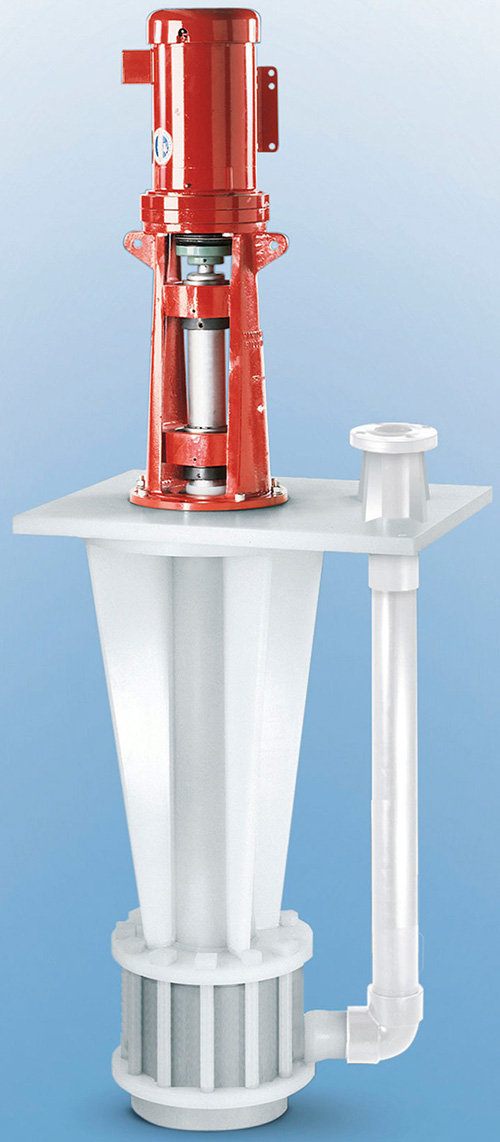A large, investor-owned utility in the southern US wanted to reduce corrosion problems and boiler downtime.
11/15/2015
Electricity-generating power plants rely on high-pressure steam to drive turbines and create electricity. The water used to create the steam can contain minerals, so it is imperative to extract these to prevent them from being deposited on the turbine blades and corroding the steam circuit. To achieve these goals, power plants typically treat the condensate with ion exchange resins.
.jpg) Image 1. This power plant's demineralization installation uses three acid pumps made of PVDF handling ambient sulfuric acid at 20 gpm against a 55-foot total dynamic head. The maintenance department replaced metal pumps that experienced chronic downtime due to corrosion. (Images courtesy of Vanton)
Image 1. This power plant's demineralization installation uses three acid pumps made of PVDF handling ambient sulfuric acid at 20 gpm against a 55-foot total dynamic head. The maintenance department replaced metal pumps that experienced chronic downtime due to corrosion. (Images courtesy of Vanton).jpg) Image 2. The sulfuric acid and sodium hydroxide needed for the ion exchange purification process is stored in these large tanks outside the processing building.
Image 2. The sulfuric acid and sodium hydroxide needed for the ion exchange purification process is stored in these large tanks outside the processing building.
 Image 3. This pump shows ribbed column construction, molded casing and impeller and a thick, sectioned thermoplastic sleeve that isolates the stainless steel shaft from fluid contact.
Image 3. This pump shows ribbed column construction, molded casing and impeller and a thick, sectioned thermoplastic sleeve that isolates the stainless steel shaft from fluid contact.
